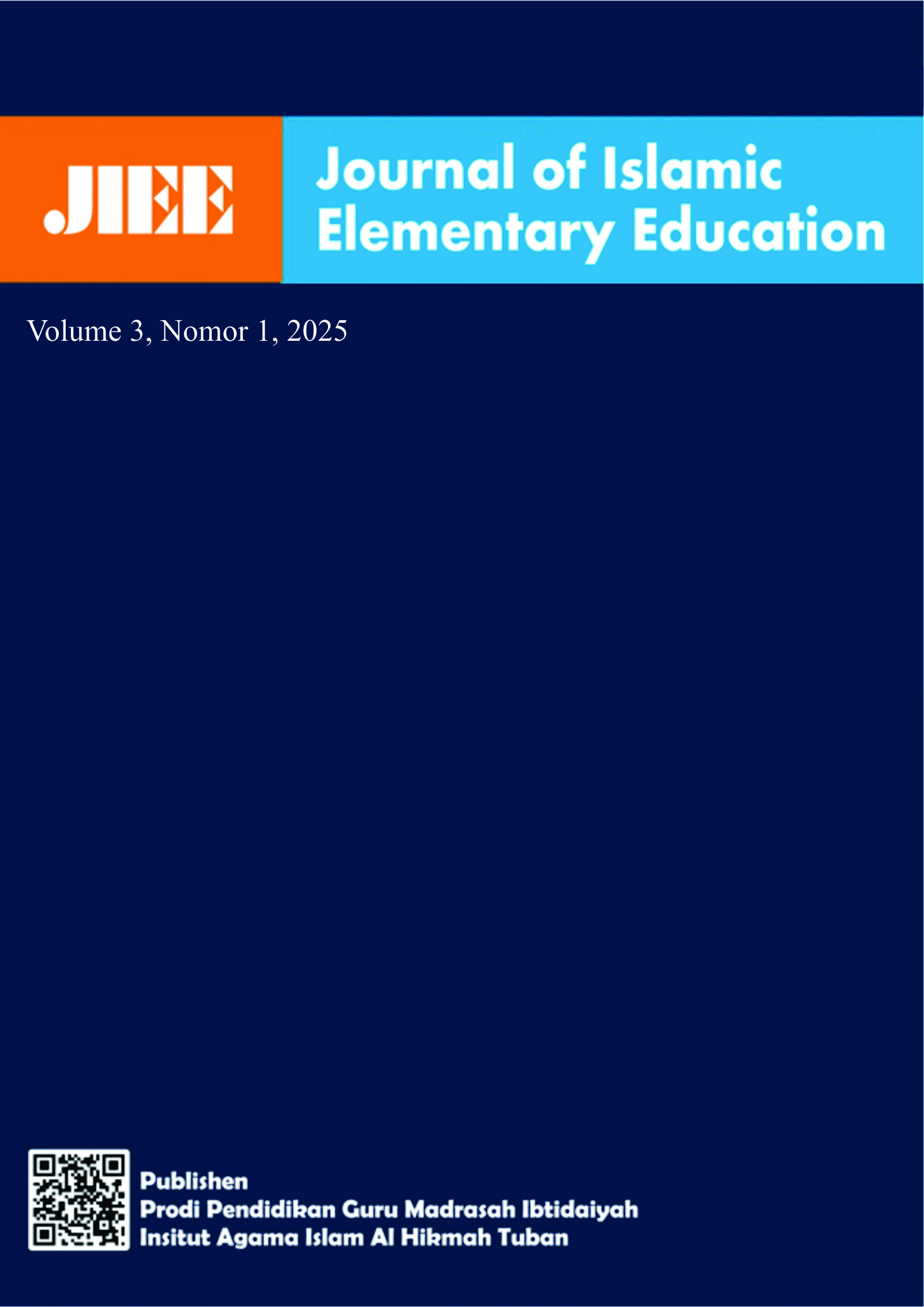Model Pembelajaran Problem Posing dalam Meningkatkan Kemampuan Berpikir Kritis Siswa Madrasah
Abstract
The phenomenon of mathematics learning in elementary schools shows a tendency for students to be less motivated and students' low ability to solve math problems. This study aims to determine the use of problem posing-based learning models in mathematics subjects theme 5 sub theme 2 material My Experience in School. This research approach is descriptive qualitative that describes the learning atmosphere in the classroom by using creative methods to train students' critical thinking skills. The subjects of the study were all grade 2 students in the even semester of the 2024/2025 school year at MI Hidayatus Shibyan Jatiklabang. The results showed that teachers at MI Hidayatus Shibyan did not only use conventional methods in the learning process. Through the application of creative learning methods such as problem posing in mathematics subjects sub-theme 2 grade 2 students are trained to think critically. Students are asked to make their own questions in the form of simple questions related to the unit table and the questions that students have made are exchanged for other students. With the application of the problem posing model, it is quite effective as an effort by teachers to improve students' critical thinking skills.
References
Anika, Susi. “Pembelajaran Matematika Melalui Problem Posing Untuk Meningkatkan Pemahaman Dan Kemampuan Aplikasi Siswa Terhadap Program Linier.” EduInovasi: Journal of Basic Educational Studies 2, no. 1 (2021): 13–23. https://doi.org/10.47467/edui.v2i1.658.
Arianti, Ni Md., I Wyn. Wiarta, and I Wyn. Darsana. “Pengaruh Model Pembelajaran Problem Posing Berbantuan Media Semi Konkret Terhadap Kompetensi Pengetahuan Matematika.” Jurnal Ilmiah Sekolah Dasar 3, no. 4 (2019): 394. https://doi.org/10.23887/jisd.v3i4.21765.
Bhoke, Wilibaldus. “PENGARUH MODEL PROBLEM BASED LEARNING TERHADAP HASIL BELAJAR MATEMATIKA.” Journal of Education Technology 2, no. 2 (2018): 70–75.
Febriyani, Siska, Hasil Belajar, Learning Ourcames, M Taheri Akhbar, and Adrianus Dedy. “Irje : Jurnal Ilmu Pendidikan” 3, no. 1 (2022): 59–63.
Firdayanti, Sheila Rosa, Filia Prima Artharina, and Veryliana Purnamasari. “Keefektifan Model Pembelajaran Problem Posing Terhadap Pemecahan Masalah Matematika” 2, no. 2 (2019): 57–62.
Hamidah, Nur, and Siti Quratul Ain. “Faktor-Faktor Penyebab Kesulitan Belajar Matematika Pada Siswa Kelas IV Sekolah Dasar.” Scaffolding: Jurnal Pendidikan Islam Dan Multikulturalisme 4, no. 1 (2022): 321–32. https://doi.org/10.37680/scaffolding.v4i1.1331.
Harliyani, Tika. “Analisis Model Pembelajaran Problem Posing Dalam Meningkatkan Hasil Belajar Siswa” 2, no. April (2022): 162–70.
Iswara, Eris, and Rostina Sundayana. “Penerapan Model Pembelajaran Problem Posing Dan Direct Instruction Dalam Meningkatkan Kemampuan Pemecahan Masalah Matematis Siswa.” Plusminus: Jurnal Pendidikan Matematika 1, no. 2 (2021): 223–34.
Kenedi, Ary Kiswanto, Yullys Helsa, Yetti Ariani, Melva Zainil, and Sherlyane Hendri. “Mathematical Connection of Elementary School Students to Solve Mathematical Problems.” Journal on Mathematics Education 10, no. 1 (2019): 69–79. https://doi.org/10.22342/jme.10.1.5416.69-80.
Sari, Zulfa, and Sukmawarti. “PERBANDINGAN MEDIA DAKON DAN TANGGA SATUAN TERHADAP PEMAHAMAN KONSEP PENGUKURAN DALAM PEMBELAJARAN MATEMATIKA PADA SISWA KELAS V SD NEGERI SEKECAMATAN DELI TUA.” Jurnal Ilmu Pendidikan 2, no. 3 (2022).
Sasmita, Novita, and Nuriana Rachmani Dewi. “KEMAMPUAN PEMECAHAN MASALAH MATEMATIKA” 5, no. 1 (2022): 7–16.
Sasmita, Rimba Sastra, and Nyoto Harjono. “Efektivitas Model Problem Based Learning Dan Problem Posing Dalam Meningkatkan Kemampuan Berpikir Kritis Siswa Sekolah Dasar.” Jurnal Basicedu 5, no. 5 (2021): 3472–81.
Simanjuntak, Mery Fransiska, and Niko Sudibjo. “Meningkatkan Keterampilan Berpikir Kritis Dan Kemampuan Memecahkan Masalah Siswa Melalui Pembelajaran Berbasis Masalah [Improving Students’ Critical Thinking Skills and Problem Solving Abilities Through Problem-Based Learning].” JOHME: Journal of Holistic Mathematics Education 2, no. 2 (2019): 108. https://doi.org/10.19166/johme.v2i2.1331.
Srirahmawati, Ija. “Peran Guru Sebagai Fasilitator Dalam Mengasah Penalaran Matematika Siswa SDN 29 Dompu Tahun Pembelajaran 2020 / 2021” 2 (2021): 114–23.
Suarsana, I. Made, Ida Ayu Putu Diah Lestari, and Ni Made Sri Mertasari. “The Effect of Online Problem Posing on Students’ Problem-Solving Abilitiy in Mathematics.” International Journal of Instruction 12, no. 1 (2019): 809–20. https://doi.org/10.29333/iji.2019.12152a.
Sulkhana, Sayyidah Irma, Fathun Ni, and Ahmad Saifudin. “Pengembangan Media Dakotar ( Dakon Matematika Pintar ) Pada Materi Satuan Panjang Dan Satuan Berat Untuk Meningkatkan Keaktifan Dan Kemampuan Berhitung ( Siswa Kelas IV SDN Gogodeso 01 ).” Patria Educational 2 (2022): 43–51. https://doi.org/https://doi.org/10.28926/pej.v1i2.













